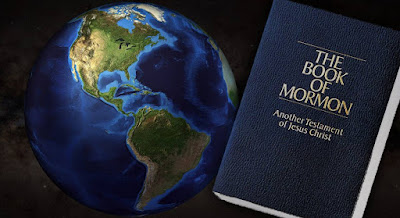 |
| Image from Book of Mormon Central |
About a month ago, the Church of Jesus Christ of Latter-day Saints released a statementon the geography of the Book of Mormon, and even more recently it has made some revisions and changes to that statement. It’s short, and sweet, and to the point. Some may be tempted to significantly add to it or bicker over its wording, but I think to do so would be inconsistent with the spirit and purpose of the statement, and be a kin to “steadying the ark,” as it were.
The Church has said what its chosen to say, and even made modifications to further clarify its intent. I have no doubt that the Church was deliberate and judicious in doing so. As such, I think it’s worth it to look carefully at some of the key statements and consider their implications for discussions about Book of Mormon geography going forward. I’d recommend, of course, that you read the whole thing for yourself and come to your own conclusions.
The main take away is (emphasis is mine in all quotations):
Although Church members continue to discuss such theories today, the Church’s onlyposition is that the events the Book of Mormon describes took place in the ancient Americas.
Note that this is the onlyposition the Church takes. This means if you believe the Book of Mormon took place anywhere in the Americas, you are in-line with the Church’s official position.
- Believe in a hemispheric geography? Your views are in-line with the Church’s official position.
- Believe in a limited geography within a specific region of the Americas—say Mesoamerica, or Peru, or the eastern United States; or even Alaska, or Terria del Fuego, or the Caribbean islands? Your views are in-line with the Church’s official position.
- Believe in a limited geography some place outside the Americas—say, the Malaysian peninsula or the horn of Africa? Your views are not in-line with the Church’s official position.
- Believe the events of the Book of Mormon took place nowhere (i.e., that the book is fiction)? Your views are not in-line with the Church’s official position.
- Believe that anything more specific than “somewhere in the Americas” is required to be consistent with the Church or the prophets? Your views are not in-line with the Church’s official position.
In fact, the Church reiterates:
The Church does not take a position on the specific geographic locationsof Book of Mormon events in the ancient Americas.
No exceptions are made to this statement. This means the Church has no official position on any specific geography location—including, for example, the location of the final battles.
Another very important part of the statement is a direct request from the First Presidency and Quorum of the Twelve Apostles:
the First Presidency and Quorum of the Twelve Apostles urge leaders and members not to advocate those personal theories in any setting or manner that would imply either prophetic or Church support for those theories.
This means anyone claiming or implying that in order to be “following the prophets,” one must agree with their views on any specifics of Book of Mormon geography—beyond the general statement that it happened somewhere in the ancient Americas—is literally going against the direct wishes of the First Presidency and Quorum of the Twelve Apostles, and thus not following the prophets.
They also make it clear, “Individuals may have their own opinions regarding Book of Mormon geography and other such matters about which the Lord has not spoken.” So this is not an indictment of those who wish to study, research, and theorize on this topic—though they do quote a warning from President M. Russell Ballard that such things “may mislead instead of enlighten,” and “can be a distraction from [the Book of Mormon’s] divine purpose.”
Heeding President Ballard’s advice, all interested in Book of Mormon geography should strive to avoid letting it take center stage. The Church’s statement stressed, “All parties should strive to avoid contention on these matters.”
It’s my hope that all involved in research on Book of Mormon geography can follow the Church’s lead. While there will no doubt be disagreements, we should all strive to engage one another cordially and in good faith, understanding that good Latter-day Saints are welcome to hold a wide variety of opinions on the location of the Book of Mormon events within the ancient Americas. Furthermore, I hope we can all avoid letting these ancillary issues distract us from the book’s main purpose as another testament of Jesus Christ.
In the words of President Russell M. Nelson (who’s quoted at the end of the statement):
“Interesting as these matters may be, study of the Book of Mormon is most rewarding when one focuses on its primary purpose—to testify of Jesus Christ. By comparison, all other issues are incidental.”
Continue reading at the original source →



